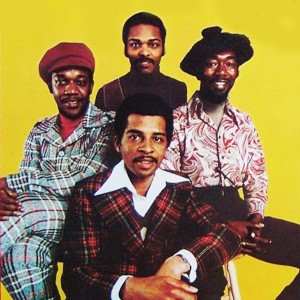 They were something of a supergroup. The members came from a background that included time in fabled groups like the Five Satins, the Cadillacs, the Moonglows, and Don & Juan. With that kind of history, why not shoot for the moon and give your group the biggest name you can think of? They called themselves New York City.
They were something of a supergroup. The members came from a background that included time in fabled groups like the Five Satins, the Cadillacs, the Moonglows, and Don & Juan. With that kind of history, why not shoot for the moon and give your group the biggest name you can think of? They called themselves New York City.
It began with John Brown who knew what the limelight was like from his time with the Five Satins (“In the Still of the Night”) and the Cadillacs (“Gloria,” Sunday Kind of Love”). When Moonglows leader Harvey Fuqua needed a fill-in for his group, Brown was his go-to guy. Claude Johnson sang with Genies who hit #71 on the Billboard chart with “Who’s That Knocking'” in 1959. But he found even greater success when he teamed up with Roland Trone and became “Juan” in the Don & Juan duo. Together they stormed up the charts all the way to #7 with the 1962 classic “What’s Your Name.”
Brown and Johnson were joined by Tim McQueen and Eddie Schell, who had sung with a wide variety of groups around town. They weren’t New York City just yet though. At first they recorded and toured under the name Tri-Boro Exchange, and were produced by Wes Farrell. They made one single for Buddha Records under that name, but it wasn’t until Farrell convinced legendary producer Thom Bell to work with the group that things started to happen.
At this point Tri-Boro Exchange apparently decided that being named after a city bridge was fine, but why not take on the name of a whole city. Bell came from a different city. It was in that city that he helped to create Philly Soul. Nonetheless he wrote a song called “I’m Doin’ Fine Now” with Sherman Marshall, and produced New York City’s take on the song. The powerful Philadelphia – New York connection resulted in a #17 single in 1973.
Having found some success, New York City began to tour. The vocal group was backed by the Big Apple Band. Two members of that band were Nile Rogers and Bernard Edwards who later founded Chic, and went on to legendary careers.
Unfortunately, follow-up singles were not as successful for New York City. “Make Me Twice the Man” only made it to #93. “Quick, Fast, and in a Hurry” did a little better in 1974, but still only reached #79. While other singles like “Happiness Is,” “Got to Get You Back in My Life,” and “Love is What You Make It” had some success on the Black Singles chart, they didn’t cross over to the pop chart at all. The group’s two albums were both Top 50 on the Black Albums chart.
And that was it for New York City. For one brief moment they were almost as big as their name. In their time they found a little bit of success on their own, and connected with some of the most illustrious figures in the history of popular music.
https://www.youtube.com/watch?v=vs3ZhZJhl2Q






Comments